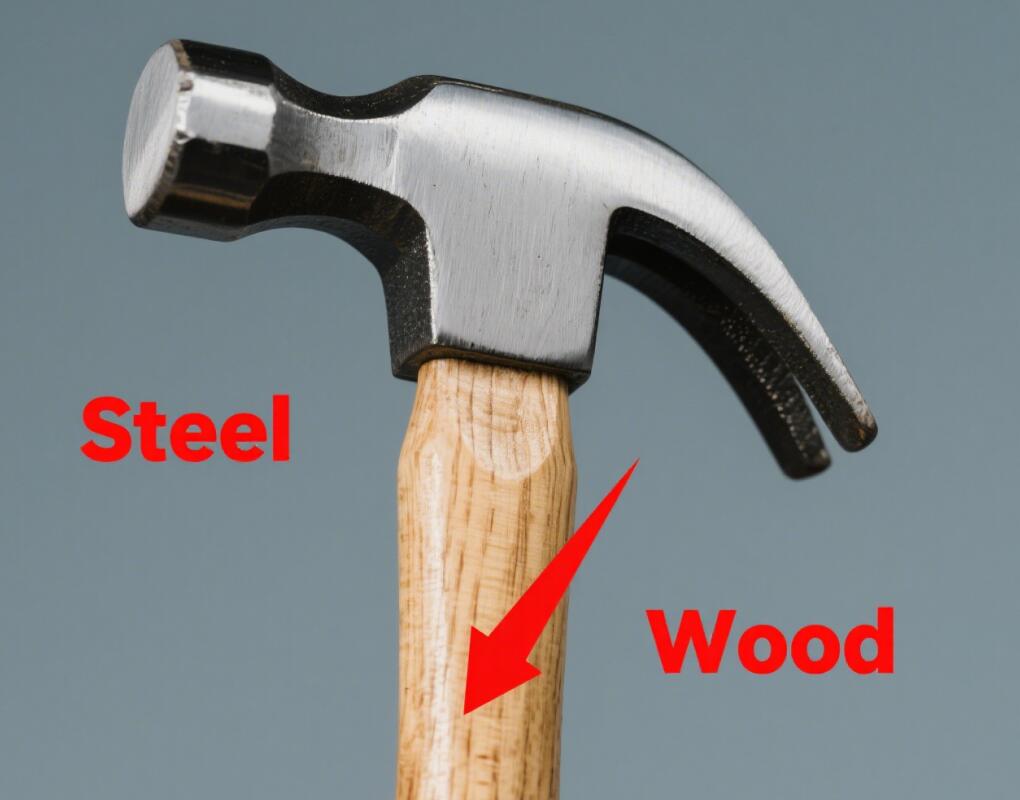What hardness of steel is generally used for hammer steel? Hammers generally use steel with 40-60HRC (Rockwell hardness).
Composition of hammers
Hammer is one of the tools frequently used in daily life. It is widely used in construction, carpentry, auto repair and other fields.

A hammer is mainly divided into two parts: hammer head and hammer handle. The hammer head is usually made of metal materials. Such as carbon steel, alloy steel (such as high chromium alloy, manganese steel), titanium alloy or copper. To take into account hardness and toughness. The hammer handle is mostly made of wood.Such as walnut, fiber composite materials or metal pipes. Choose cushioning, lightweight or durability according to the applications.
Requirements for Hammer Steel
Choosing suitable steel can make the hammer stronger, more durable and more effective.
The core requirement of the hammer head is impact resistance and not easy to deform. The requirements for hammer steel mainly include the following aspects:
1. Enough hardness. The hardness of steel can reflect its relative firmness to a certain extent. If the hardness is too low, it will affect the actual application effect of the hammer.
2. Enough toughness. Even when the hammer hits the surface, the steel can withstand a certain impact force. And it will not be damaged quickly.
3. Easy to process. If the steel is too difficult to process, it will be very difficult to make it into a hammer. It is also not conducive to large-scale production.
Common steel hardness range
In practical applications, hammers need to have both hardness and toughness. The hardness of commonly used hammer steel is between 40-60 HRC (Rockwell hardness). Generally, hammers with a hardness of about 45HRC have better results. Besides, in some special application scenarios, steels with higher hardness may also be used.
Common hammer steel materials
1—-Carbon steel: The most common choice. High cost performance and moderate hardness. Suitable for daily knocking operations. High carbon content. Relatively cheap. But poor damage resistance.
2–Alloy steel: After adding alloy elements, damage resistance and strength are relatively enhanced.
High chromium alloy (such as Cr26): Hardness up to HRC59-62. Strong wear resistance but low toughness. Suitable for crushing high-hardness materials.
Manganese steel (such as ZGMn13): Surface hardening when impacted. Suitable for repeated knocking of medium-hardness materials.
Structural steel (Such as 42CrMo) High strength and wear resistance. Hardness after induction quenching HRC 54-60.
3–Titanium alloy: Lightweight and corrosion-resistant. Mostly used for professional tools or special environments.
4–Copper: Outstanding explosion-proof properties. Commonly used for maintenance work in flammable and explosive occasions.
5–Stainless steel: Better performance in appearance and rust. But the cost is relatively high.
Precautions
1. It is important to have enough hardness. But, steel that is too hard may crack. So, toughness, strength and hardness factors need to be considered comprehensively when selecting steel.
2. If used improperly, excessive impact on the surface of certain materials may cause them to deform, crack or become projectiles. Use with caution.
Conclusion
The hardness of commonly used hammer steel is between 40-60HRC. Among them, hammers with a hardness of about 45HRC have better performance. When we choose a hammer steel the factors of hardness, toughness and strength will be the main elements. And pay attention to safety when using it.
